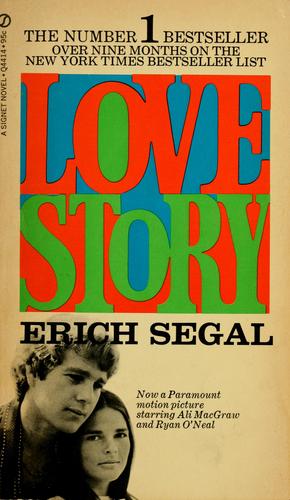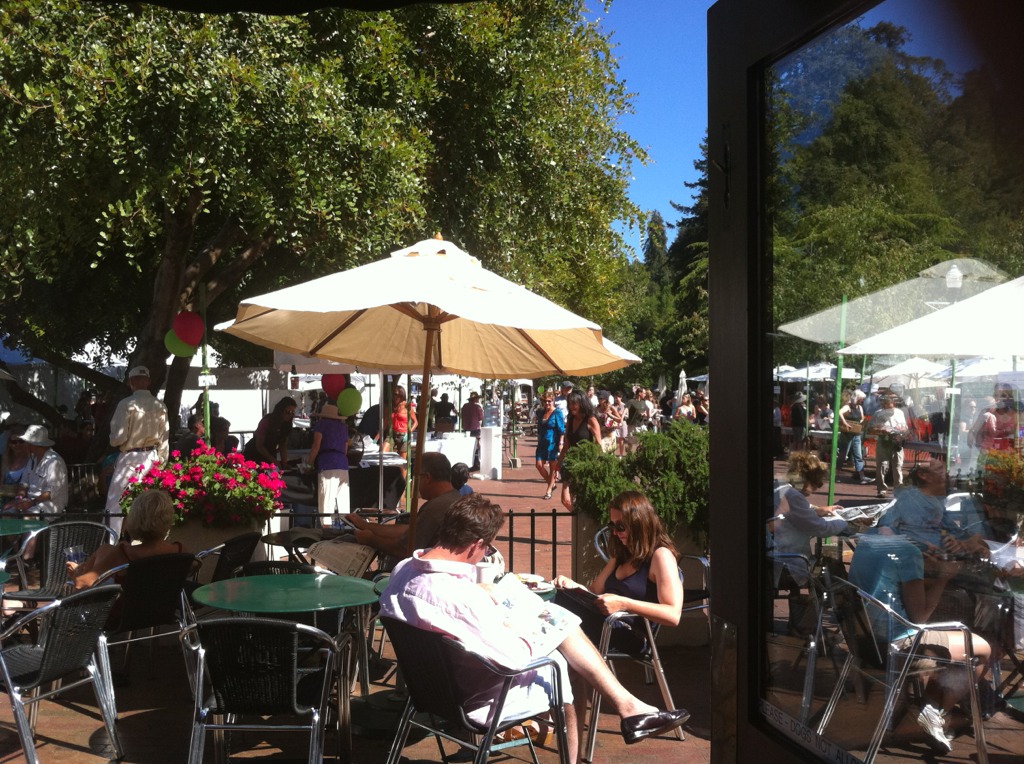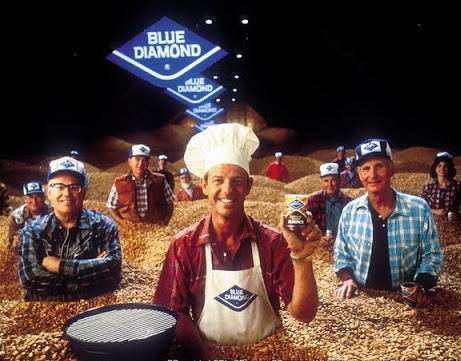Let me state from the outset, Your West Coast Oenophile is not trying to cast any aspersions. Sostevinobile may be a passion—even an intellectual pursuit as I strive to develop an encyclopædic knowledge of the wines grown and produced along the northeast rim of the Pacific. But I initially trained as a Classics scholar, a pursuit with little practical relevance outside of academia or a post at the Vatican, and so I resort to any pretext I can find for dusting off twelve years of Latin studies (what does irrumabo mean, Sister Frances?) as a language and corpus of literature.
At another point, I may regale readers with some of the more piquant tales of my academic pursuits, particularly those relating to the tutelage of renowned Plautine and Euripidean scholar, the late Erich Segal. Suffice it to say that my response to his intellectual pretense became encapsulated in a full-length drama I wrote to fulfill the requirements for my other academic major in Creative Writing: (The Love Story of Big Daddy’s) Пошлость. OK, so I needed a pretext to dust off my knowledge of the русский язык, as well.
But before I go off on yet another endless digression, let me redirect focus to a trio of intimate wine tastings I attended to kick off the opening round of wine releases for 2014. All of these events, of course, are familiar to frequent visitors here, but the prospect of sampling numerous bottlings from the highly-anticipated 2012 vintage portended to promise “never having to say you’re sorry.”
 |
I) Every January, the collective known as In Vino Unitas holds its annual trade tasting in several venues around the Bay Area, including San Francisco. In many ways, it’s exactly what a trade tasting should be: intimate setting (Press Club), a moderate crowd delimited by staging in multiple alcoves, a leisurely pace that allowed ample time to interact with each of the winemakers or representatives from the wineries, and a discrete selection of wines neither overwhelming in its scope nor predominated by the more familiar selections each winery typically featured at other events.
|
I, of course, have sampled and cited each of the 14 wineries pouring here numerous times now; as such, let me simply highlight the most noteworthy selections from each, starting with a surprising 2010 Malbec Napa Valley, a three vineyard assemblage from Buoncristiani. This opulent rendering was accompanied by the four Buoncristiani brothers’ signature 2009 O.P.C. (Ol’ Pa’s Cuvée), a proprietary blend of four varietals: Cabernet Sauvignon, Syrah, Merlot and Malbec. And as exquisite were the 2012 Chardonnay Napa Valley, blended with grapes from both Hyde Vineyard and Pahlmeyer Waters Ranch, and the limited production 2010 Cabernet Sauvignon Napa Valley, combining fruit sourced from the Howell Mountain, Coombsville, and Atlas Peak appellations.
Like Coombsville, Atlas Peak is a sleeper sub-AVA in the Napa Valley that is finally starting to get the recognition it deserves. Although Antinori has replaced the extensive Sangiovese plantings that gave this region its early renown, the current roster of Atlas Peak vineyards is achieving prominence for all five of the primary Bordeaux varietals, Syrah, the resultant Meritages and blends, plus a number of Rhône and other varietals. Perhaps the most prominent tract from Atlas Peak, Stagecoach Vineyard is the centerpiece of Krupp Brothers viticultural expanse. While myriad labels source their grapes from Stagecoach, here Krupp’s own eclectic labels showcased a number of exceptional selections, including their 2009 Black Bart Syrah and 2011 Chardonnay. Krupp’s true stars of the afternoon came from their (slightly) waggishly-named 2008 Veraison Red Wine, a claret-style blend of Cabernet Sauvignon, Merlot, Cabernet Franc, Petit Verdot, Malbec and Syrah, and the superb 2008 Veraison Cabernet Sauvignon Stagecoach Vineyard, a pinnacle of Atlas Peak œnology.
The name Stagecoach may be a conceit for Krupp but certainly holds validity for Fisher, a winery whose forebears revolutionized carriage production. With a viticultural craft as meticulous as their branded Body by Fisher, their immensely appealing 2011 Mountain Estate Chardonnay poured here served as bold prelude to the phenomenal 2010 Coach Insignia Cabernet Sauvignon, a blend of 86% Cabernet Sauvignon and 14% Merlot from their Calistoga estate.
A couple of more understated Napa Valley estates focused on their 2011 releases. Organically farmed Ehlers Estate, a trust holding of the Leducq Foundation (Ehlers was deeded by late founder Jean Leducq), showcased their 2011 120/80 Cabernet Sauvignon and 2011 1886 Cabernet Sauvignon. Michael Marks’ Gemstone highlighted an exceptional 2011 Estate Red Wine, a Meritage focused on 71% Cabernet Sauvignon, with 23% Merlot and 6% Cabernet Franc.
It seems to early to formulate a consensus on the 2011 Cabernet vintage; so far, after four consecutive excellent, if not monumental, years, the 2011 Pinot Noir vintage has tested the mettle of winemakers across the state and in Oregon. Donum Estate in Carneros, now owned by a Danish partnership but still overseen by Anne Moller-Racke displayed their forte with both the 2011 Anderson Valley Estate Grown Pinot Noir Angel Camp Vineyard and the less ponderously labeled 2011 Russian River Valley Estate Grown Pinot Noir. Also excelling with this vintage, Soledad’s Manzoni Estate Vineyard, impressing with their 2011 Pinot Noir Santa Lucia Highlands Home Vineyard and startling with the luxuriant 2011 Pinot Noir Estate Reserve Santa Lucia Highlands Home Vineyard.
Jericho Canyon in Calistoga should not be confused with the Sanel Valley’s Jeriko Estate, two wineries as much dedicated to sustaining the integrity of the environment as much as their devotion to their viticulture. Jericho Canyon’s meticulous focus on Bordeaux varietals most evidenced itself in both their 2012 Sauvignon Blanc and a striking 2010 Jericho Creek Cabernet Sauvignon. And, of course, I would never compare Meyer Family Cellars to Löwenbräu, Munich’s 631 year old brewery, despite the overt similarity of their leonine logos. Heralding from Yorkville, near Mendocino’s Hopland (as opposed to Bavaria, Germany’s “Hopsland”), their iconoclastic bottlings prominently featured the 2009 Reserve Syrah High Ground and a voluptuous 2004 Cabernet Sauvignon Bonny’s Vineyard 10-Year Anniversary Release.
Little question whether redheads like Christina Hendricks embody the very definition of voluptuous. Nearly as luscious—Los Gatos’ titian tribute, Testarossa, a winery whose name clamors for Italian varietals but nonetheless flourishes with a striking portfolio of Burgundian bottlings. From its hillside perch along the Santa Cruz Highway where Novitiate used to make sacramental wines, Rob and Diana Jensen produce consistently elegant vintages, evidenced here by both their 2012 Santa Lucia Highlands Chardonnay and the 2011 Doctor’s Vineyard Pinot Noir.
|
 |
Streaks of red highlighted the asymmetric coiffure Remi Barrett sported for this event, but there was little, if any, bottleshock detectable in the stellar lineup from La Sirena that she poured here. Winemaker Heidi Barrett, Remi’s mother, while renown for her Cabernets, here excelled with a pair of Syrahs: the 2010 Le Barrettage Napa Valley and the 2007 Syrah Barrett Vineyard. Nevertheless, the 2010 Cabernet Sauvignon Napa Valley proved every bit the equal of both these bottlings, but the true standout here undoubtedly came from the 2010 Barrett and Barrett Cabernet Sauvignon, a sumptuous collaboration between Heidi and husband Bo, winemaker for Château Montelena.
I wish Heidi’s considerable repute would carry over to her winemaking at Kenzo. It’s not that the wines aren’t good, but neither the 2012 Astasuyu, an estate-bottled Sauvignon Blanc, nor the 2010 Rindo, Kenzo’s traditional Meritage, astounded—something I expect from a $200 million winery that lavished on every aspect of its production.
Back when I started out in the wine industry, I was acquainted with Heidi’s father Richard Peterson, as well as the Mirassou brothers in San Martin, who had offered to provide the juice for my George Herbert Walker Blush. While Mirassou is now firmly in the clutches of Gallo, Steven Kent Mirassou, the family’s sixth generation winemaker, is serving notice that the Livermore Valley is a force with which to be reckoned (beyond its nuclear capabilities). Certainly the Russian River Valley 2012 Pinot Meunier Saralee’s Vineyard his La Rochelle label produces deserves a nod, but both the 2010 Cabernet Sauvignon Livermore Valley from this Steven Kent Winery and the extraordinary 2010 Lineage, a proprietary bottling of 65% Cabernet Sauvignon, 16% Cabernet Franc, 15% Merlot, 3% Petit Verdot, and 1% Malbec, also from Livermore, could easily hold their own against higher priced Napa bottlings..
As wonderfully unpredictable as a Livermore venture of such exceptional caliber may seem, a mediocre bottling from the fabled Far Niente, along with sister labels Nickel & Nickel, En Route and Dolce, would be equally surprising. Yet the opulence of the Far Niente label hardly belies the richness of its viticulture. Its 2012 Chardonnay Napa Valley Estate proved utterly splendid, as did its 2011 Cabernet Sauvignon Oakville Estate. Equally enchanting: the 2011 Cabernet Sauvignon Branding Iron Vineyard from Nickel & Nickel. As the baby sister of the family, En Route still needs time to equal these peaks, but the 2007 Late Harvest Wine from Dolce, a botrytis-laden blend of Sémillon and Sauvignon Blanc, most definitely warranted its “Liquid Gold from Napa Valley” moniker.
II) My extensive Latin studies coincided with 12 years of pedantic exercises regurgitating les précis de grammaire française. Add to the mix six years of ancient Greek and several terms of Russian along the way. If memory serves, there was actually a master plan behind all this, though precisely what eludes me at this stage.
It wasn’t until I completed my various courses of study that I decided to tackle a language with practical implications. Others in my position might well have opted to learn Spanish, but for myriad reasons I may elucidate in another post, non voglio parlare spagnolo.
My choice finally to learn the tongue my grandparents grew up speaking continues to open doors for me in San Francisco and throughout the wine realm, but at times my predilection for Italian puts me at odds with the realities of a state that had formerly been part of Mexico. And so I must catch myself from the pronouncing ci as ch (instead of the Spanish si) when speaking of the Santa Lucia Highlands.
But, of course, Sostevinobile concerns itself with the pleasures of wine, not the minutia of morphology, and once again, the annual trade tasting for the Santa Lucia Highlands Wine Artisans abundantly demonstrated why this AVA is so prized. And perhaps more than any other AVA in California, its renown predominantly relies on select, highly-revered vineyards even more than its acclaimed labels, notably Soberanes, Pisoni, Garys’, Rosella’s and Sierra Mar Vineyards, farmed collectively or individually by the Pisoni and Franscioni families, well as Tondrē Grapefield and the Hahn Family’s Doctor’s Vineyard.
The youngest tract in this cluster, Soberanes, found ample representation within this tightly-bonded alliance, as evidenced by newcomer Cattelya, with their introductory 2012 Syrah Soberanes Vineyard (at $70/bottle, a surprisingly high price for a first release, were it not crafted by a winemaker with Bibiana González Rave’s pedigree). Also sourcing from this plot, my friend Rebecca Green Birdsall’s Black Kite, a winery that, until now, had sourced its Pinot strictly from Mendocino. Here the 2011 Pinot Noir Soberanes Vineyard paired nicely with their first white offering, the 2012 Chardonnay Soberanes Vineyard.
One of my central tenets in developing the wine program for Sostevinobile has been my belief that the boundaries between the West Coast states have now blurred in terms of the quality and prominence of their viticulture—an admission I would certainly never have made when I began
my wine career in 1982. Perhaps no other artisanal endeavor transcends the artifice of these territorial delineations more than Hawks View Cellars, an Oregon-based winery specializing in distinctive varietals from all three states. Here they showcased their California selections, a 2011 Pinot Noir Soberanes Vineyard along with an equally luscious 2011 Syrah Garys’ Vineyard. Their apex, however, was the 2011 Syrah Cellar Series—Garys’ Vineyard, a masterful expression of the grape.
Like many of today’s wine writers, I maintain a scoring system, not for purposes of publication, per se, but rather to maintain a hierarchy for my own notes. I haven’t scrutinized the methodologies 100-point scoring systems Wine Spectator and Robert Parker employ, but I would be hard pressed to make such fine distinctions between say a 96 vs. 97 in their ratings; rather, mine roughly correlates to the 4.0 scale academies use in their grading. As such, so many of the wines here warranted scores substantially greater than the proverbial A-, I am going to restrict inclusion only to those in the top tier for the day, like the aforementioned Cellar Series Syrah.
All six of the wines Lompoc’s Loring Wine Company poured showed extraordinary complexity, but even among this collection, the 2012 Chardonnay Sierra Mar Vineyard outshone. McIntyre, which only sources estate fruit for its Pinots and Chardonnays, radiated with its “old vine” selection, the 2012 Estate Pinot Noir 25th Anniversary Santa Lucia Highlands. Similarly, Dan Morgan Lee, who produces the quasi-eponymous Morgan label, flourished with a pair of bottlings from his proprietary vineyard blocks: the 2012 Pinot Noir Twelve Clones and the equally spectacular 2012 Pinot Noir Double L Vineyard, where he also grows Syrah, Chardonnay and, atypically, Riesling.
Another winery that notably veers from the orthodoxy of the SLH trifecta: Chardonnay, Pinot Noir and Syrah, Chris Weidemann’s Pelerin, which I last encountered at Wines of Danger, hit their apex here with their 2010 Pinot Noir Rosella’s Vineyard. Manzoni made a reappearance at this tasting, with the same lineup as they had poured at In Vino Unitas, while La Rochelle showcased their SLH selections, highlighted by a spectacular 2010 Pinot Noir Sleepy Hollow Vineyard and their version of 2011 Pinot Noir Soberanes Vineyard.
Both of the Garys excelled in their own right at this tasting. Gary Franscioni highlighting the 2012 Pinot Noir under his Roar label, Gary Pisoni with the 2012 Chardonnay Soberanes Vineyard from his Lucia line. And Tondrē Alarid more than proved his mettle with his 2010 Pinot Noir Tondrē Grapefield from his eponymous Tondrē Wines.
III) Shifting focus, my next foray took me to the Oakland outpost of Campovida, the Hopland retreat center that produces a line of organic wines under its various Mendocino labels. The tasting here served as one of the several regional preludes Rhône Rangers has been hosting prior to its revamped Grand Tasting in Richmond, with select wineries from its North Coast chapter.
As with the SLH Artisans, exceptional wines were largely rule of the day, starting with the 2006 Syrah Saralee’s Vineyard from Arrowood, a winery that, along with Byron and Freemark Abbey, was bounced around in an acquisition juggernaut following Constellation’s purchase of Robert Mondavi, before finally settling in the Jackson Family Wines portfolio. Although Richard Arrowood has moved onto Amapola Creek, this splendid wine still bore his imprimatur. Charlie Dollbaum’s Carica Wines has also seen a changing of the guard, as well as the vineyards it had originally sourced, and so his superb 2009 Syrah Kick Ranch will not have a successive vintage. Nonetheless, his 2010 Siren, a Sonoma County Syrah-focused GSM blend proved even more compelling.
I tend to regard Craig Camp’s Cornerstone as a Cabernet-focused house, but here they abundantly demonstrated their versatility with Syrah. starting with their 2009 Stepping Stone Syrah, blended with 10% Grenache, followed by their showcasing of the subsequent 2010 Stepping Stone Syrah, atypically rounded out with 5% Merlot. Another Rhône iconoclast from Napa, Miner Family Winery, excelled with a bone-dry yet subtle 2011 La Diligence, their 100% Marsanne. Equally appealing—the 2011 Marsanne from JC Cellars. Complementing this white delight, winemaker Jeff Cohn reached back to his Rosenblum roots to craft an elegant 2010 Syrah Rockpile Vineyard and a stunning mélange of Grenache, Mourvèdre, Syrah and Petite Sirah he modestly labeled the 2011 Misc Stuff.
Another JC’s compatriots from the East Bay Vintners Alliance, Bob Rawson’s Urbano Cellars, vastly impressed with both their 2009 Grenache Lodi and the 2010 Côte du Clements, a blend of 50% Syrah, 25% Grenache, and 25% Mourvèdre. Urbano’s frequent tablemate at these tastings, Oakland’s Urban Legend, similarly is a label I tend to associate more with Italian varietals; here, they flourished with their Rhône offerings: the 2010 Grenache Shenandoah Valley, the 2011 Syrah Cooper Ranch, and the 2020 Cuvée Lola, a distinctive blend of 45% Mourvèdre, 42% Grenache, 10% Syrah and 3% Petite Sirah.
I have striven, throughout the years I have been building the wine program for Sostevinobile, to maintain an utter objectivity about the wines we will select. Granted, I may display a small degree of partiality toward a number of wineries and winemakers who abetted my previous tenure in winery Mergers & Acquisitions (eventually, I will recount here how a series of coincidences involving Frog’s Leap and a comedy sketch by Peter Cook and Dudley Moore led me to the wine field) while the collapse of Katselis Wines has rendered my vow never to serve Αστέρι Μου a moot point; still, I ought to have a predisposition towards Kent Humphrey’s Eric Kent Wines based on our mutual renunciation of the kakocracy known as advertising to pursue the collegiality of the œnological realm. No bias needed on this day, however, to luxuriate in both his 2011 Kalen’s Big Boy Blend (100% Syrah) and the 2011 Barrel Climber Grenache—both for the wine inside the bottles and the amazing commissioned art gracing the individual labels.
If I had one, albeit slight, complaint about this tasting, it was that most of the wineries poured conservatively, not veering from the GMS mainstays on the red side, along with Petite Sirah, and the Roussanne-Marsanne-Viognier triumvirate for their whites. Christian Stark, however, showcased his 2012 Carignane Trimble Vineyard alongside impressive bottlings of the 2011 Petite Sirah Damiano Vineyard and the 2011 Syrah Eaglepoint Ranch. And William Allen, one of the prime movers on the current Rhône Rangers Board of Directors, featured Two Shepherds’ signature 2012 Grenache Blanc Saarloos Vineyard, complemented by the 2011 Syrah|Mourvèdre.
It took a bit of prodding to get host Campovida to pour their rendition of the 2012 Carignane Mendocino County from behind the bar, but it proved well worth the effort. Among their official selections for the afternoon, the standouts were the 2012 Grenache Mendocino County and a proprietary blend, the 2012 Campo di Rossa, a sublime marriage of 67% Grenache, 18% Syrah, 16% Carignane and 4% Petite Sirah.
I concluded the afternoon with Melinda Doty’s Stage Left Cellars, an Oakland winery given to some wondrously unorthodox blends, like Grenache/Cabernet Sauvignon/Mourvèdre, but here electing to prove their forte with unadorned yet excellent single varietals: the 2009 Syrah Alder Springs Vineyard from Mendocino, their 2010 The Escape Artist, a Santa Lucia Highlands Syrah, and a 2009 Petite Sirah, blended from the Yorkville Highlands’ Theopolis Vineyard and HoppeKelly Vineyards in the Russian River Valley.
Whither the truth in all these forays? Will my ceaseless efforts to catalogue the entire panoply of sustainable West Coast wines finally bear fruition in 2014 or merely serve as another intellectual pursuit? Rest assured, there was method to my madness back during my academic tenure that adapted to the rigors of my current pursuit, will carry my vision for Sostevinobile to fruition.
Quod erit demonstrandum.
 All that will finally change this coming Sunday, as my blue & black Scattante CFR Comp Carbon Road Bike and I head over the Golden Gate, dodging the inevitable horde of wannabe cyclists wreaking havoc on their Blazing Saddles rentals to the 33rd Annual Mill Valley Wine, Beer and Gourmet Food Tasting.
All that will finally change this coming Sunday, as my blue & black Scattante CFR Comp Carbon Road Bike and I head over the Golden Gate, dodging the inevitable horde of wannabe cyclists wreaking havoc on their Blazing Saddles rentals to the 33rd Annual Mill Valley Wine, Beer and Gourmet Food Tasting.  All that will finally change this coming Sunday, as my blue & black Scattante CFR Comp Carbon Road Bike and I head over the Golden Gate, dodging the inevitable horde of wannabe cyclists wreaking havoc on their Blazing Saddles rentals to the 33rd Annual Mill Valley Wine, Beer and Gourmet Food Tasting.
All that will finally change this coming Sunday, as my blue & black Scattante CFR Comp Carbon Road Bike and I head over the Golden Gate, dodging the inevitable horde of wannabe cyclists wreaking havoc on their Blazing Saddles rentals to the 33rd Annual Mill Valley Wine, Beer and Gourmet Food Tasting. 







